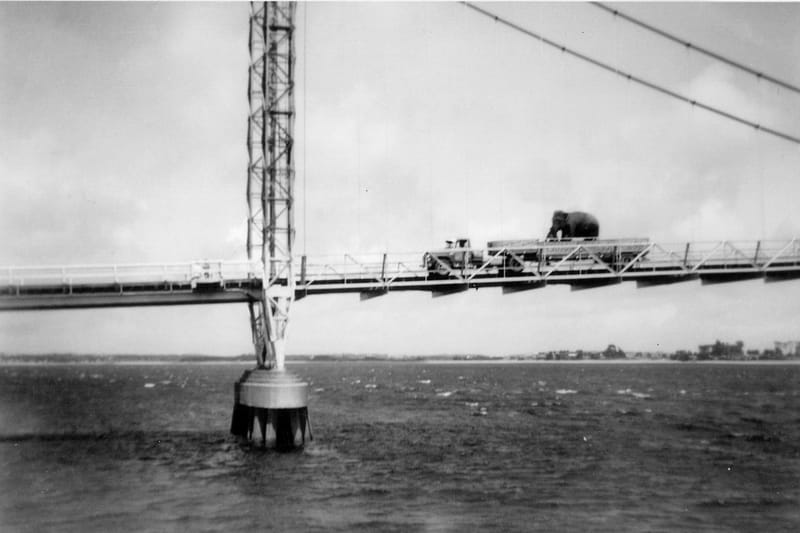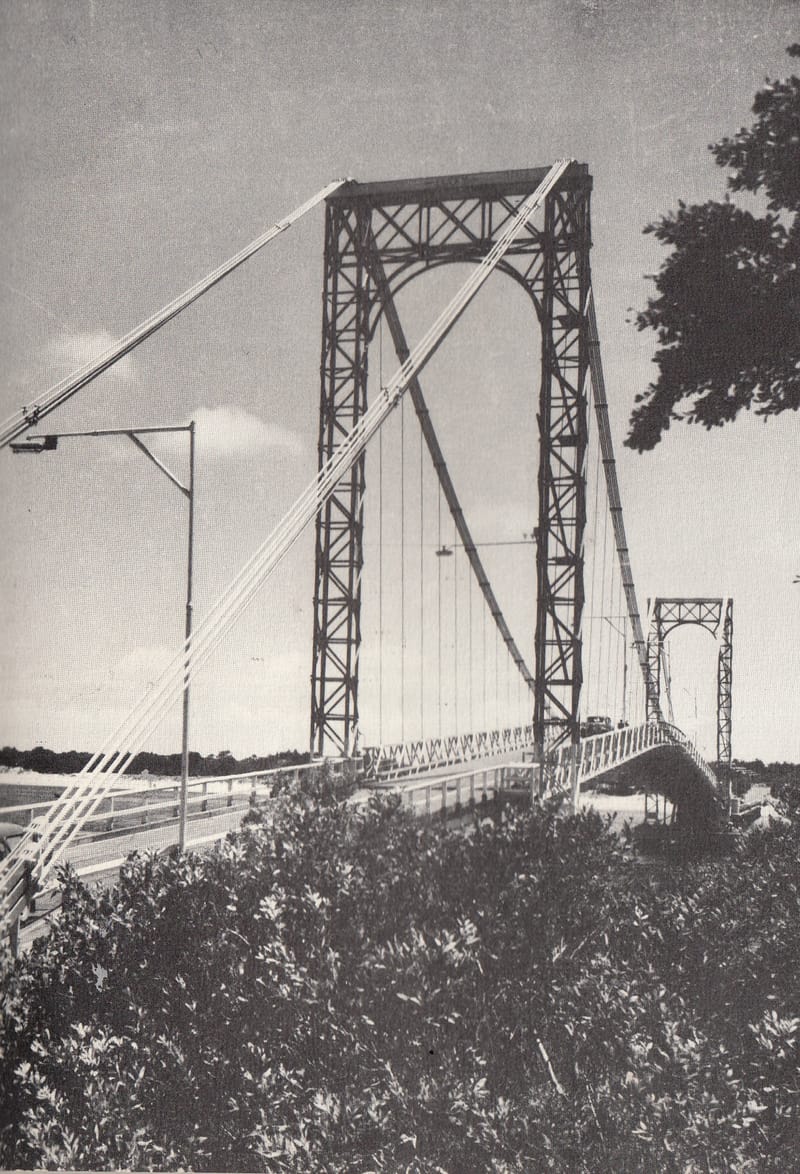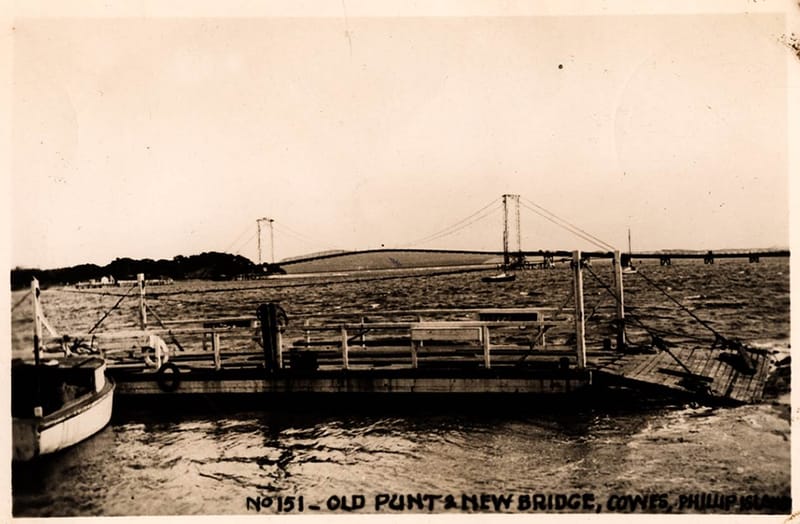A look back in time ... a second bridge is built
It was 52 years ago on Sunday, November 21, since the Phillip Island bridge was opened. One of the major factors in the growth of the island since that time was the construction of the second bridge which replaced the old swing bridge which opened...
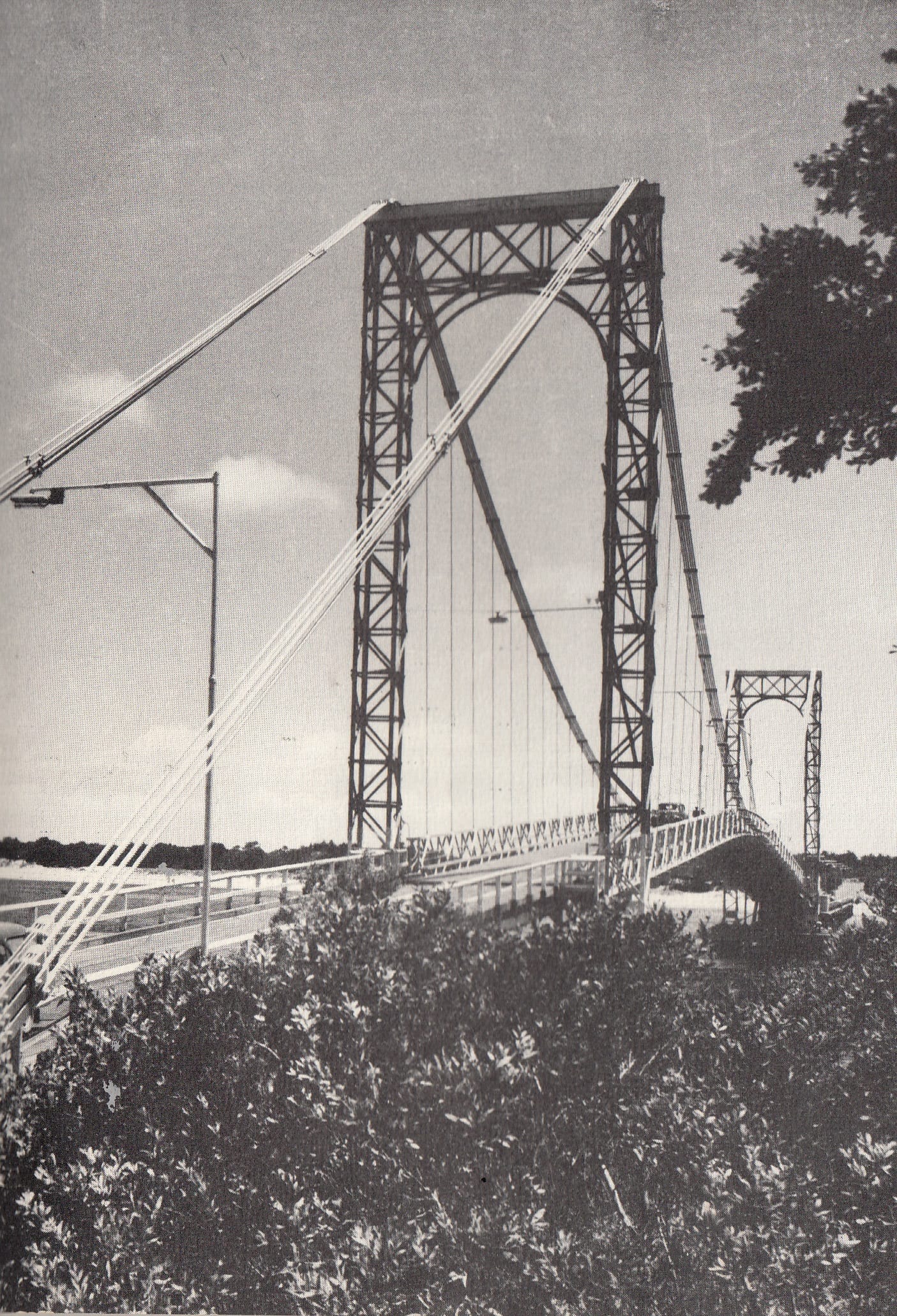
It was 52 years ago on Sunday, November 21, since the Phillip Island bridge was opened.
One of the major factors in the growth of the island since that time was the construction of the second bridge which replaced the old suspension bridge which opened in 1940.
The building of the second bridge which began in 1966 and was completed in 1969 had an enormous effect on the island, opening up further trade and tourism. It made a massive difference to the haulage of goods and stock to the mainland.
For three years during the construction period, the trucks from Ted Jeffery’s transport business at Newhaven were used around the clock to haul materials and equipment to and from depots in Melbourne, for the building of the bridge.
1760 tons of cement was also carted by Ted Jeffery from Traralgon to Newhaven for its construction. The cement was mixed on site and used to build all of the piers from Newhaven to San Remo. It was back breaking work, Ted recalled in an interview some years ago, as each bag had to be physically handled twice – loaded and unloaded – at each end.
Why a new bridge was required
Due to the limited finance available when the first bridge was constructed, and the use of so much second-hand material to build it, there was a loading of only six tons gross on two axles in each lane. The rapid increase in weight and density of road traffic since the original bridge was opened in 1940 meant the need for a new more modern bridge was evident.
A CRB traffic count in March 1960 was 635 vehicles per day whilst in December it ranged from 4730 vehicles per day to up to 6263 vehicles. Permission for eight ton loads to cross the old bridge had to be given and even heavier loads were believed to be crossing.
In 1959, one of the end hangers supporting the deck from the main cables in the suspension span broke at the lower end. The sea, air and tides had taken their toll from the foundations upwards.
The decision was made to build a new bridge.
Alternative routes
As Cowes was the main centre on the Island and Melbourne (45 miles north) the main source of traffic, three feasible routes were considered:
- Via Somers. Most direct route (48 miles) involving three-mile crossing over the sea which because of potential deep water port area, would require a high level bridge over the main channel.
- Via Stockyard Point and French Island. This route is 70 miles, would give access to French Island, still involves three-mile crossing over the sea in shallower water requiring provision for fishing vessels only.
- Via San Remo—Newhaven, the present route with length of about 84 miles.
After investigation, the site chosen was that suggested by Richard Grayden in the first place for the old bridge, back in 1938.
Site investigations
Site investigations included the following:
- Hydrographic survey.
- Underwater inspection of the channel and seabed.
- Seismic traverses.
- Core boring at each shoreline.
- Penetrometer soundings.
An additional loading proposed for the design of bridge piers allowed for a boat colliding with one.
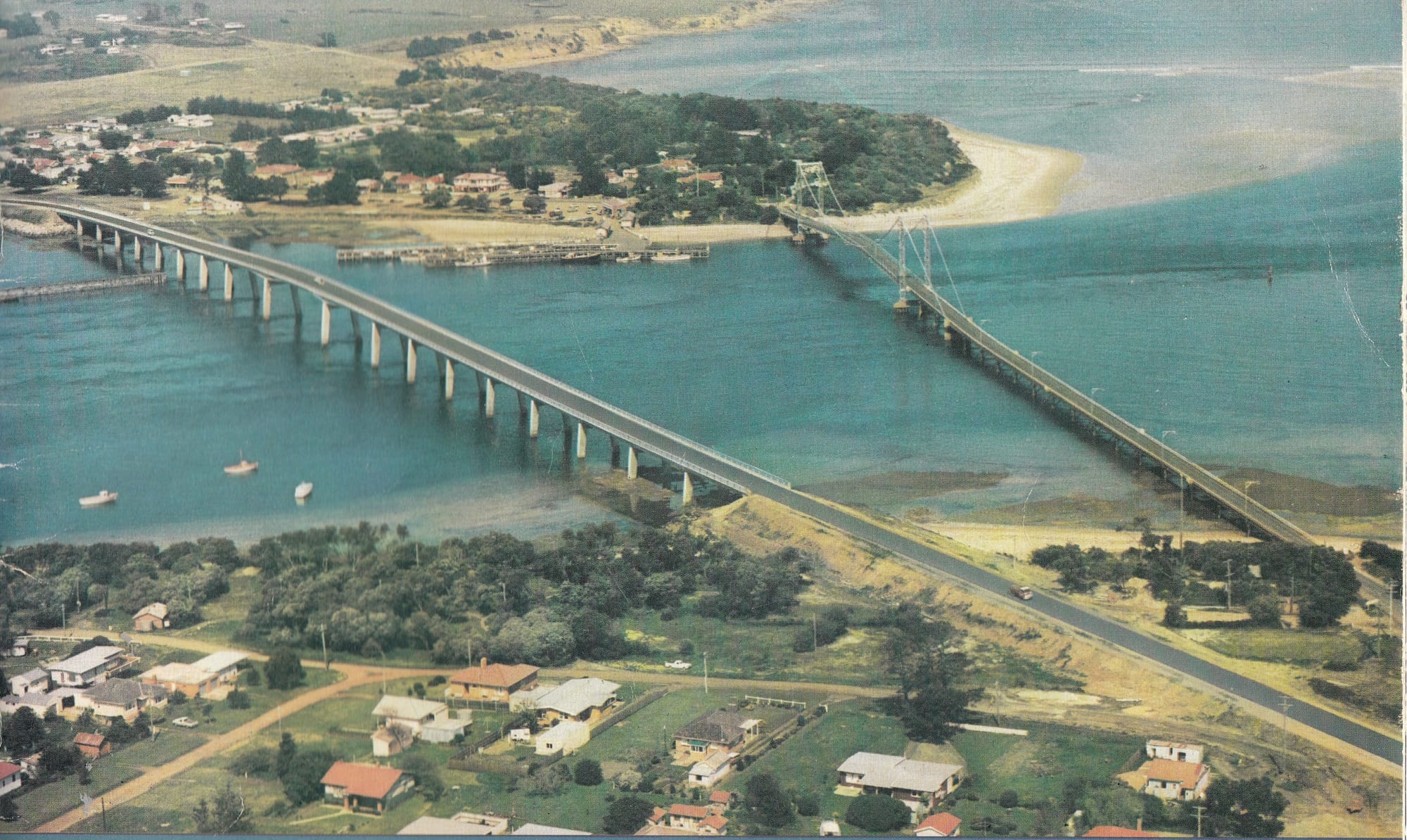

Many features had to be considered, right down to the annoying little bump felt by motorists as they entered and left the bridge - this was eliminated.
Description
It was finally decided to build the bridge from reinforced concrete and prestressed concrete 2100 feet long with a central 200 feet navigation span flanked by 150 feet anchor spans and 100 feet approach spans on each side.
The bridge is 28 feet wide between kerbs with a five feet wide footway. Navigational clearance at high tide is 40 feet.
Beams in superstructure:
- 80 pre-tensioned “T” beams each 100 feet in 16 approach spans.
- 5 pre-tensioned “T” beams each 92 feet in suspended main navigational span.
- 10 post-tensioned segmental beams each 204 feet long spanning anchor spans and cantilever (approx.) 50 feet into the main navigational span.
Large quantities of concreting used: Roadworks – pavement 8-inch base course, 6-inch fine crushed rock, top course and 1-inch asphalt surface.
Contractors
The contract for construction of the bridge was awarded to John Holland and Company Pty Ltd in April 1966, who elected to work from a temporary steel bridge.
Foundation and superstructure: spread footing, cylinders or piles used according to ground conditions which generally consisted of basaltic clay.
Special arrangements were made to counter the corrosive effect of salt water. The piers are reinforced concrete portal frames with sloping column legs. The suspended span, with 92 feet long beams, has a pre-stress of 775,000 pounds in each beam.
Handrails were aluminium.
Five sub-contractors and material suppliers were used.
The bridge was officially opened by the Hon M V Porter, MLA, Minister of Public Works, on November 21, 1969.
Cost: $3.25 million.



